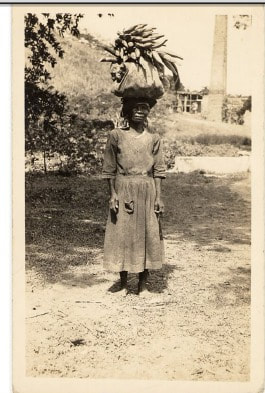THE ERA OF THE METAYAGE SYSTEM IN TOBAGO. (BACK IN TIME WITH HISTORIAN ANGELO BISSESSARSINGH)6/21/2022 After emancipation in 1834, Tobago evolved speedily economically, but socially remained very much a slave island, retaining many aspects of chattel slavery and the social relationships thereof. Many ex-slaves were forced to return to the sugar estates, because unlike their counterparts in Trinidad, there was no abundance of forested crown land to squat upon, most arable lands already being in the hands of plantation owners. Nevertheless,a thriving sharecropping system emerged , called metayage.
The Metayage system was basically a system of farming in which rent is paid as a percentage of the crops yielded, and in which the owner usually supplies the farmer with seed and stock. . The sharecroppers , called metayers provided labour to plant , harvest and process sugar cane and in return received a couple barrels of sugar in return. They were also allowed provision grounds on their cane-holes (as the allotments were called) and there, grew what food they could . In the wetter windward districts such as Parlatuvier and L'Anse Fourmi, dasheen, yams, and cassava was grown, while in the drier leeward areas, peas, coconuts and corn was grown. Plymouth was the depot for fresh and locally salted fish. With little cash at hand, the ex-slaves of Tobago developed a complex barter system which survived well into the 1950s. Women from the windward villages would carry provisions on their heads to Plymouth to exchange for fish, which the Plymouth fishermen were glad of since the poor soils around the village were unproductive. Similarly, the corn, peas, and coconut oil of the leeward areas was taken to Scarborough Market to be traded for ground provisions , meat, fish and manufactured goods. It was often such that after walking 10 miles or more with a 150lb. load of provisions on her head, a woman to market in the town would be able to exchange her produce for other foods, but sell very little for cash. The little currency she received would be used to purchase salt, lard , soap and matches at the shops, which did not permit barter. An exception to the rule was the Ottley Shop , owned by the father of the late historian , C.R. Ottley, which would take in garden produce in trade for goods. This photo shows an elderly metayer with her basket full of traded provisions and the sugar factory in the background where she may have provided labour in return for sugar and molasses. (Source: Virtual Museum of TT, May 31, 2022)
0 Comments
Leave a Reply. |
T&T news blogThe intent of this blog is to bring some news from home and other fun items. If you enjoy what you read, please leave us a comment.. Archives
May 2025
Categories
All
|


 RSS Feed
RSS Feed